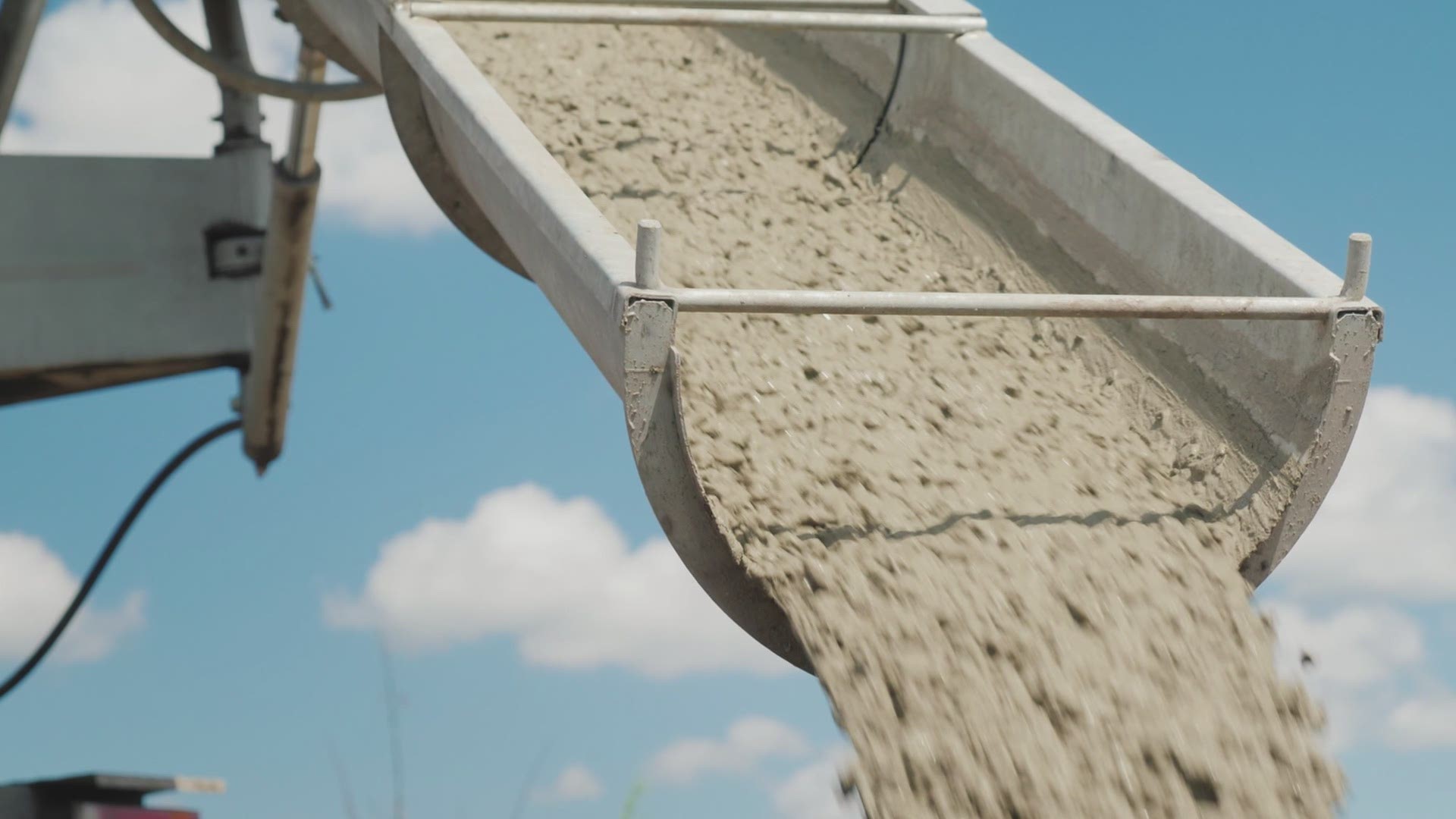DALLAS — Editor's note: The video above is from a related story.
We need cement for pools and patios, foundations and freeways.
And we use a lot of it in Texas, said Ed Sullivan, the Chief Economist and Senior Vice President of Market Intelligence for the Portland Cement Association.
"It's the largest state consumer in the country," he explained.
In 2019, Sullivan said Texas hit a historical record in terms of cement consumption. Last year, it took a little bit of a pause. But this year: "The growth is resuming," Sullivan said. "Demand is there.”
Winter storm still causing cement supply issues in Texas
The demand is there, but supply has been greatly disrupted.
Following supply chain disruptions in the pandemic, the state was hit by the February winter storm.
The winter storm "restricted as much as half a million tons (of cement) in the Texas market," Sullivan said.
"In terms of market tightness, Dallas is the worst in the country right now,” he added.
Much of the capacity that was temporarily knocked offline has since been restored.
But one big problem remains: The LafargeHolcim plant in Midlothian told WFAA one of their two clinker kilns was damaged and is still awaiting repair. That kiln has a capacity of up to 1.34 million tons of clinker (a major component of cement) per year. A spokesperson for LafargeHolcim said the company is, “Supplementing the market with product from our other facilities. We expect to have a solution in place by later this summer.”
Ironically, following the winter storm, weather has helped alleviate the situation. Frequent rains in parts of Texas have prevented a lot of concrete from being poured, allowing stockpiles to recover some. But one person who works in the concrete industry told us on background that the cement stockpile could be consumed within three weeks, now that drier conditions have returned.
To listen to this week's episode of Y'all-itics, subscribe wherever you get your podcasts: Apple Podcasts | Spotify | Stitcher | Amazon Music
The effects of a tight supply of cement
Builder Michael Turner of Classic Urban Homes said cement is harder to get and has increased in cost.
“It’s probably up 10 to 12 percent from where it is usually," Turner said. "Now, we are dealing with rationing ... your concrete contractor that normally could order as many trucks on concrete as he wanted to. But now you are rationing to only 100 yards per day."
"If you are pouring a 4,000 square foot house that has some pretty deep beams and that sort of thing, you are going to probably need 150 to 160 yards of concrete. That’s more than your ration so you are either going to have to borrow from your buddy or you’re having to go, 'hey can I take half of my ration from tomorrow and get that today, so I can pour that foundation?'" Turner explained. "It’s a big problem.”
The Texas Department of Transportation, which is one of the largest cement customers said it is hearing from contractors about cement supplies getting tight, but that those suppliers have been successful in locking up enough product to ensure TxDOT’s projects stay on schedule.
Ed Sullivan said he believes the tight conditions will persist through the peak summer building season, but will likely ease in the fall and winter.
To listen to this week's episode of Y'all-itics, subscribe wherever you get your podcasts:

